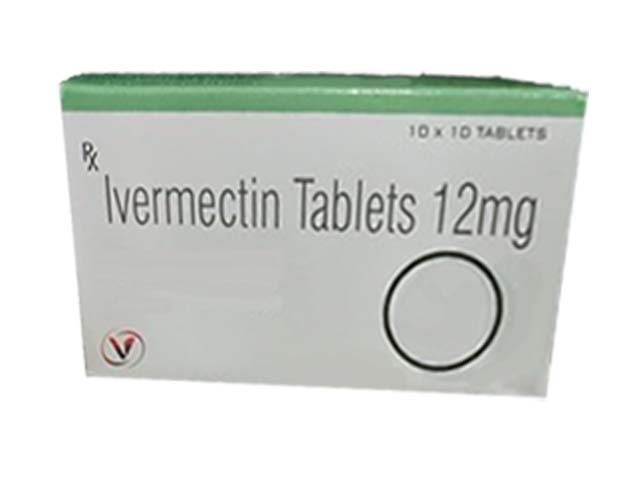
Governments around the world banned the use of Ivermectin and Hydroxychloroquine that were a lifesaving triple-therapy against COVID-19. It has long been thought that their reason for doing this was because they wanted to force everyone in the world to use the expensive, negative efficacy vaccines.
Dr. Pierre Kory already revealed the Ivermectin Story. Recently, the large, published Itajai (Brazil) study showed that strict regular use of IVM led to a 100% reduction in hospitalization, and a 90% reduction in death. Now there is a follow-up to that study.
People are saying governments still don’t care, because it was never about health, it was about control, and they were being controlled too.
Here is the abstract to the study, with links to both studies mentioned above.
The Abstract
Background: Previously, we demonstrated that ivermectin use as prophylaxis for COVID-19 was associated with reductions in COVID-19 infection, hospitalization, and mortality rates, and in the risk of dying from COVID-19, irrespective of regularity and accumulated use of ivermectin, in an observational, prospectively obtained data from a strictly controlled city-wide program in a city in Southern Brazil (Itajaí, SC, Brazil) of of medically-based, optional use of ivermectin as prophylaxis for COVID-19.
In this study, our objective was to explore the data obtained from the program to evaluate whether the level of regularity of ivermectin use impacted in the reductions in these outcomes, aiming to determine if ivermectin showed a progressive dose-, regularity-response in terms of protection from COVID-19 and COVID-19 related outcomes.
Materials and methods: This is a prospective observational study of the program mention above, that used ivermectin at a dose of 0.2mg/kg/day for two consecutive days, every 15 days. We obtained and analyzed the data regarding the accumulated dose of ivermectin use, in addition to age and comorbidities, to analyze the patterns of reduction of COVID-19 infection, hospitalization, and mortality rates, and risk of dying from COVID-19, according to the regularity and amount of ivermectin used in a 5-month period.
Following definitions of regularity, we considered as strictly regular subjects that used at least 180mg of ivermectin (180mg = 30 tablets), and as sporadic users subjects that used 60mg (= 10 tablets) or less during the 5-month period. Comparisons between subjects that did not use ivermectin and these two levels of regularity of ivermectin use were performed.
Analysis of the intermediate levels of ivermectin use are present in the supplement appendix of this study.
To analyze hospitalization and mortality rates, we utilized the database of COVID-19 infections of all participants, from Itajaí and outside.
To analyze COVID-19 infection rate and risk of dying from COVID-19 we utilized the Itajaí city database. Propensity score matching (PSM) was employed, followed by multivariate adjusted analysis for residual differences (doubly adjusted analysis).
Results: Of the 7,345 cases of COVID-19, 3,034 occurred in non-users, 1,627 in sporadic users, and 289 in strict users, while the remaining cases occurred in the intermediate levels of ivermectin use. Strict users were older (p < 0.0001) and non-significant higher prevalence of type 2 diabetes and hypertension.
COVID-19 infection rate was 39% lower among strict users [4.03% infection rate; risk ratio (RR), 0.61; 95% confidence interval (n = 289 in each group for both comparisons; 95%CI), 0.53 – 0.70; p < 0.0001] than in non-users (6.64% infection rate), and non-significant 11% reduction compared to sporadic users (4.54% infection rate) (n = 1,627 in each group; RR, 0.89; 95%CI 0.76 – 1.03; p = 0.11).
Hospitalization rate was reduced by 100% in strict users, compared to non-users and to sporadic users, both before and after PSM (RR, 0.00; 95%CI, not applicable; p < 0.0001). After PSM, hospitalization rate was 35% lower among sporadic users than non-users (RR, 0.65; 95%CI, 0.44 – 0.70; p = 0.03). In propensity score matched groups, multivariate-adjusted mortality rate was 90% lower in strict users compared to non-users (RR, 0.10, 95%CI, 0.02 – 0.45; p = 0.003) and 79% lower than in sporadic users (RR, 0.21; RR, 0.04 – 1.00; p = 0.05), while sporadic users had a 37% reduction in mortality rate compared to non-users (RR, 0.63; 95%CI, 0.41 – 0.99; p = 0.043).
Risk of dying from COVID-19 was 86% lower among strict users than non-users (RR, 0.14; 95%CI, 0.03 – 0.57; p = 0.006) and marginally significant, 72% lower than sporadic users (RR, 0.28; 95%CI, 0.07 – 1.18; p = 0.083), while sporadic users had a 51% reduction compared to non-users (RR, 0.49; 95%CI, 0.32 – 0.76; p = 0.001).
Conclusion: Non-use of ivermectin was associated with a 10-times increase in mortality risk and 7-times increased risk of dying from COVID-19, compared to strictly regular use of ivermectin in a prospectively collected, strictly controlled population. A progressive dose-response pattern was observed between level of ivermectin use and level of protection from COVID-19 related outcomes and consistent across different levels of ivermectin use.
Source – https://goodsciencing.com/covid/government-media-ban-lifesaving-ivermectin/
